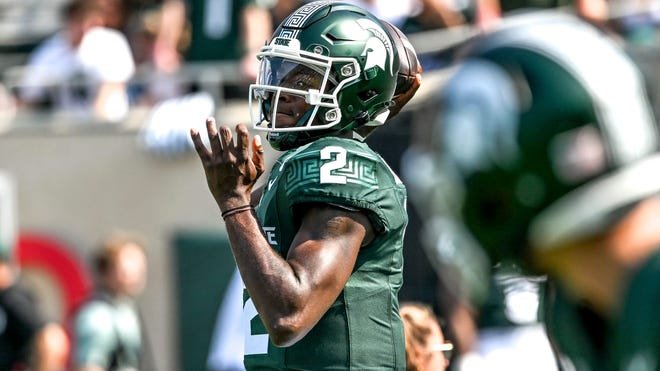Overview of Michigan State Football Results
Michigan State University has had a compelling football season, characterized by a mix of successes and challenges that have shaped their performance and strategy. As the season progresses, the results reflect not only the athletic prowess of the players but also the effectiveness of the coaching staff’s tactical decisions. In the recent games, the team has displayed notable resilience, particularly in key matchups against rival schools, showcasing their determination and competitiveness within the Big Ten Conference.
One of the standout games that captured attention was the match against a top-ranked opponent, where Michigan State demonstrated their strategic depth. The offensive unit had impressive statistics, with significant contributions from key players, who not only executed plays effectively but also adapted to the game’s ebb and flow. The quarterback’s precision and the wide receivers’ agility were instrumental in securing vital touchdowns, while the defense worked tirelessly to contain the opposing team’s efforts, ultimately leading to a thrilling victory.
In terms of statistics, the team’s passing game has improved substantially compared to previous seasons, indicating a shift in strategy that emphasizes aerial attacks. This adaptation has allowed Michigan State to maximize its scoring opportunities, contributing to a higher point average this season. Additionally, standout players have emerged, each contributing to the overall team dynamics. Players’ individual performances have not only bolstered Michigan State’s standings but have also fostered a sense of unity within the team, as they rally around shared goals and objectives.
As the season draws closer to its conclusion, the implications of these results become increasingly significant. The team needs to maintain their momentum to secure a favorable position for bowl game selections. Fans can expect to see continued evolution in play style and lineups, as Michigan State aims to refine their approach and capitalize on their strengths heading into the final stretch of the season.

The Risks Associated with Football Games
Football, particularly at the collegiate level like that of Michigan State, is a physically demanding sport characterized by its intensive physical contact. This attribute inherently makes it prone to a variety of injuries. Among the most concerning risks are concussions, fractures, and other types of trauma. According to recent studies, football players have one of the highest rates of concussions compared to athletes in other sports. Research indicates that players on football teams experience nearly 10 times more concussions than those participating in sports like soccer, basketball, or baseball. This disparity highlights the unique dangers associated with the game of football.
Beyond concussions, fractures are equally prevalent among football players. The combination of high-speed collisions and the necessity for physical resilience generates a landscape where serious injuries can occur. These fractures can result in long-term consequences, such as chronic pain and mobility issues, which are critical considerations that all players need to be aware of as they advance in their football careers. Notably, many athletes are willing to risk these consequences for the sake of competition, which can complicate recovery times and the overall health of the players.
Medical experts emphasize the importance of addressing these risks head-on. The consensus is clear: adequate training, the enforcement of safety protocols, and innovations in safety equipment are paramount. The advent of better helmets and protective gear has certainly contributed to reducing injury rates, but players remain exposed to significant threats on the field. The long-term implications of football-related injuries can lead to serious health issues later in life, including cognitive decline and chronic traumatic encephalopathy (CTE). Consequently, awareness and educational initiatives regarding injury risks are vital for the wellbeing of collegiate athletes in Michigan and beyond.

Importance of Medical Treatment Before and During the Game
In the context of Michigan football, medical treatment plays a crucial role in safeguarding players’ health and well-being. Prior to stepping onto the field, it is essential that athletes undergo comprehensive pre-game assessments. These evaluations typically include physical examinations, screening for potential injuries, and fitness assessments to ensure that players are in optimal condition. Such assessments assist coaching and medical staff in identifying any underlying issues that may predispose athletes to injury during practices and games.
Moreover, warm-up routines are integral to the preparation for competitive football. These structured warm-up sessions are designed not only to enhance performance but also to mitigate the risk of injuries. Stretching, agility drills, and sport-specific movements improve flexibility and muscle readiness, which is vital given the physical demands of the game. The implementation of proper warm-up practices can significantly reduce the likelihood of acute injuries, a factor frequently acknowledged in discussions about Michigan football safety protocols.
In addition to pre-game measures, the capacity for immediate medical response during games is critical. The fast-paced nature of football means that injuries can occur at any moment, necessitating the presence of trained medical personnel on-site. In Michigan, teams adhere to prescribed protocols that allow for rapid assessment and treatment of injuries, whether they be concussions, fractures, or other acute conditions. Quick and effective medical intervention not only aids in the immediate recovery of injured players but can also minimize the risk of long-term consequences associated with untreated injuries. Thus, the framework of medical treatment before and during football games is integral to the overall safety of players, particularly in a high-contact sport like football, underscoring the importance of prioritizing player health throughout the season.
Future Directions for Player Safety in College Football
The landscape of college football is evolving, particularly regarding player safety. As the sport continues to grow in popularity, initiatives aimed at minimizing injuries and enhancing player protection are more crucial than ever. One area of focus is the innovation in helmet technology. Brands and manufacturers are developing advanced helmet designs that utilize new materials and engineering techniques to absorb impact better. These helmets aim to reduce the risk of concussions and other head injuries, providing an added layer of security for athletes on the field.
In addition to equipment advancements, rule changes play a significant role in player safety. Governing bodies, such as the NCAA, are continuously evaluating and amending rules to make the game safer. For instance, modifications to targeting penalties and restrictions on specific types of tackles intend to protect players from dangerous situations. By instituting such changes, the college football community demonstrates a commitment to prioritizing the health and safety of its athletes, ultimately affecting the overall game dynamics.
Ongoing medical research also contributes to this effort. Universities and medical institutions are conducting studies on the long-term effects of playing football and are working on protocols for safer practice and game conditions. This research informs coaching strategies and health guidelines, thus facilitating a better understanding of injury prevention and player readiness.
Furthermore, comprehensive education and training programs for coaches and medical staff are essential. Equipping them with the knowledge to recognize potential risks and respond to medical emergencies can significantly impact player well-being. This holistic approach ensures that athletes are supported not only on the field but in their overall health journey.
As these advancements unfold, they are likely to reshape the perception of Michigan football and college football at large, reinforcing its commitment to sustainability as a sport that values the safety of its players.


